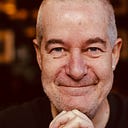Member-only story
So, you want to be a critical thinker? Listen to Marcus Aurelius

These days there is much talk about “critical thinking,” though it’s hard to pinpoint what is meant by this rather abused phrase. At the college level, for instance, almost every department claims to be teaching critical thinking, but arguably only philosophy and, with caveats, psychology programs actually do. That’s because critical thinking isn’t just the notion that we should think critically about X (where X can be any subject matter). Although of course we should. Rather, critical thinking is the idea that there are certain specific methods, attitudes, and practical bits of information that provides us with the tools for thinking critically about any X.
Critical thinking is often associated with the word “skepticism,” as in “my understanding of the facts and my practice of good reasoning lead me to be skeptical that we are being visited by aliens onboard of flying saucers.” Now, Skepticism with a capital S was, of course, an ancient Greco-Roman philosophy that held that human nature is either highly fallible or downright impossible. Radical Skeptics like Pyrrho of Elis thought that we should make no claims to knowledge whatsoever. More moderate Skeptics, like the Academic Carneades counseled to hold onto our opinions lightly, since we can never be sure they will not be overturned tomorrow. The Skeptics were not interested just in epistemology, but in practicing eudaimonia, a life worth living. For them, the recipe for a eudaimonic life was precisely not to get too attached to our opinions, which will help us maintain a state of ataraxia, or tranquillity of mind.
Modern skepticism traces back to two major figures of the 18th century: David Hume and Pierre-Simone de Laplace. Hume famously said that:
“A wise man … proportions his belief to the evidence.” (An Enquiry concerning Human Understanding, 1748)
And Laplace echoed the sentiment:
“The weight of evidence for an extraordinary claim must be proportioned to its strangeness.” (Théorie analytique des probabilités, 1812)
